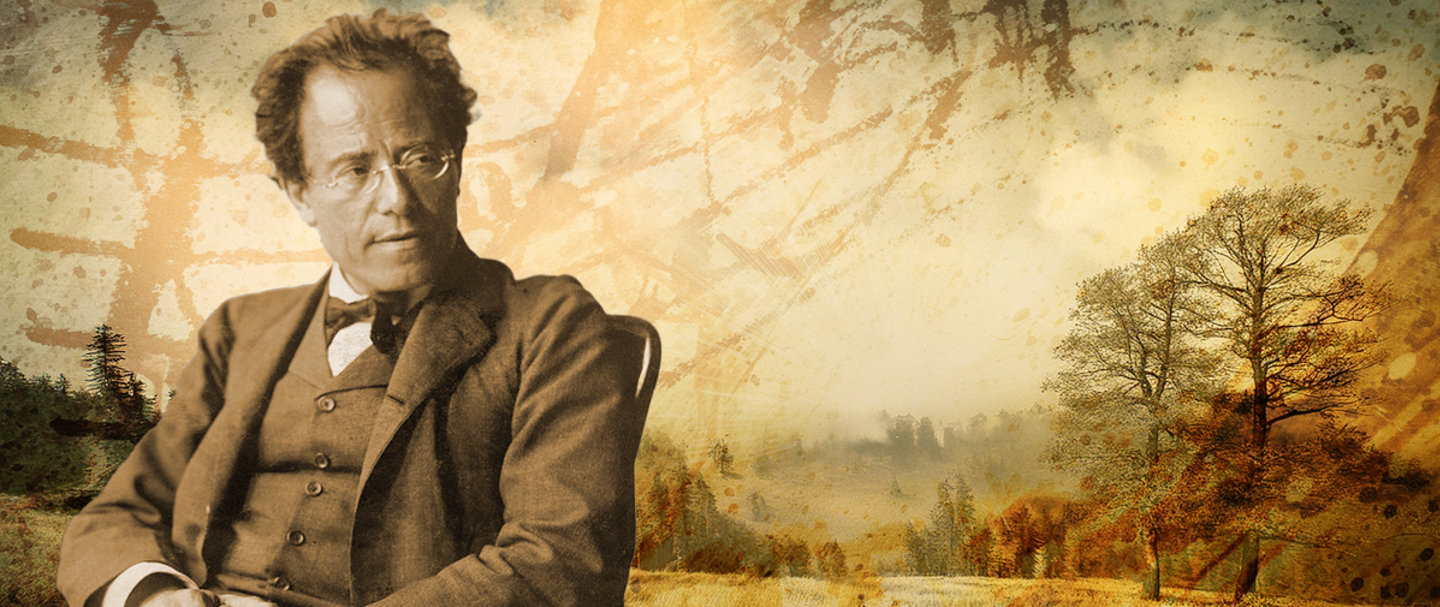- Andante comodo
“The first movement is the most wonderful thing Mahler has written. It is the expression of an unheard of love for this earth, the longing to live in peace on earth, to enjoy nature to its deepest depths, before death comes. As it comes inexorably.” – Alban Berg, writing his wife in 1912.
Alban Berg was a pupil of Arnold Schoenberg, leader of the Second Viennese School, whose expressionism led to the development of a new, atonal music. Mahler saw the younger Schoenberg’s efforts in the first decade of the twentieth century as an inevitable progression, and protected him from harsh critics, but was unable to adopt his most extreme musical ideas. Schoenberg and his acolytes were, in turn, lifelong Mahler advocates.
In his Ninth Symphony, we see a Mahler confronting the past/future dichotomy, with one bitterly nostalgic foot in an innocent past, and the other anxiously bracing for a violent future. Leonard Bernstein saw Mahler as a prophet, predicting the wars that would end the world as Mahler knew it. While a shade poetic, Mahler saw dramatic change on the horizon and somehow understood that he was destined to be the final flagbearer of the German symphonic tradition of the old world.
The burden became most evident when, in 1907, he was diagnosed with a defective heart. Depressed and anxious, unable to exercise and faced with his imminent demise, his rheumatic heart disease caused an irregular heartbeat that can be heard in the opening bars of his final symphony.
The opening movement is massive in scope, setting a tone for the whole symphony, exploring the emotional extremes of peace and despair, order and chaos. The music is extreme as well: each instrument is treated as an independent operator as if the orchestra is a vast chamber ensemble, saturated with recurring melodic fragments that spin longer melodies that shapeshift organically, while abandoning a traditional melody/accompaniment hierarchy.
Opening with a primordial sparseness, the irregular toning of the harp and the fluttering of violas can be heard as Mahler’s failing heartbeat. A melody takes shape, initiated by a recurring sighing motive, “Lebewohl”, “Adeiu”, “Goodbye”, a farewell figure that transcends language barriers. If this first melody conveys the love of nature and the joy of life, bidding a fond farewell, the second is one of confrontational anger in the depressed relative minor key.
The opening is recalled, now with foreboding timpani replacing the gentle harp. This extensive development section becomes lost in a daydream, soured by fierce fanfares and harsh orchestral density. A return of the timpani, coupled with chimes, marks the grim funeral march, but shrouded in darkness as if a premonition. The recapitulation is a warm return to natural beauty. In a moment of profound compositional inspiration, winds—especially the flute and horn—layer to evoke birdsong in what Berg called “a vision of the hereafter.” In the final moments of the movement, time stands still as a descending flute floats to the ground. A final violin melody with horns and oboe bid adieu.

 Media Sponsor: Virginia Media, WHRO Public Media
Media Sponsor: Virginia Media, WHRO Public Media
